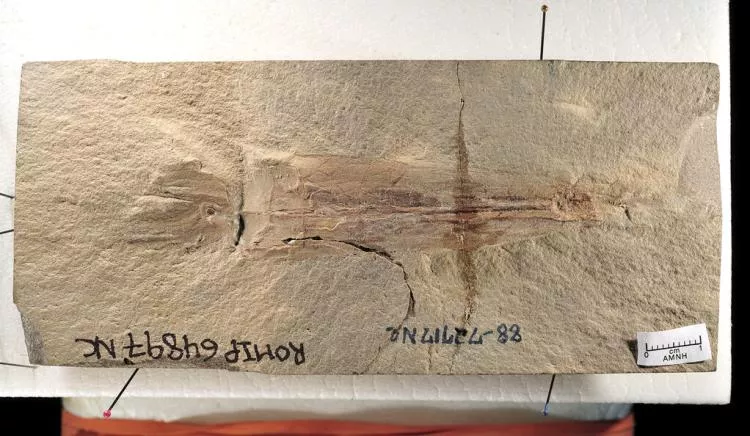Overlooked fossil turns out to be oldest known ancestor of octopuses
A study of the fossil has extended the fossil records of the vampyropod by nearly 82 million years.
Found in Montana’s Bear Gulch limestone formation, the unassuming 12cm (4.72inch) fossil was subsequently donated to the Royal Ontario Museum in 1988. And there it lay quietly in a drawer in the Invertebrate Palaeontology collection for decades while scientists fussed over fossil sharks and other creatures from the site.
Until, one day, palaeontologists noticed the fossil’s 10 limbs and took a closer look.
It was then they realised that the fossil was that of a vampyropod—an ancestor of modern octopuses and vampire squid—and that it lived about 330 million years ago, before the time dinosaurs roamed the earth.
This was highly significant, as the oldest known definitive vampyropod then was from 240 million years ago.
Further research into the fossil resulted in a paper published in the Nature Communications journal earlier this year.
The researchers named the new species Syllipsimopodi bideni to acknowledge American President Joe Biden's focus on climate change and science-backed policies.
Besides extending the vampyropod's fossil records by almost 82 million years, the new species is the only known vampyropod with ten functioning limbs with two rows of suckers each. In contrast, octopuses and cuttlefish have eight arms, while the vampire squid have eight arms and two filaments.
In addition, it did not have a phragmocone (internal chambered portion to control buoyancy), but a gladius (flattened remnant of an internal shell) instead, similar to squids. There was also some evidence of an ink sac and the species was likely to have lived in a lagoon bay.
“Syllipsimopodi bideni [...] challenges the predominant arguments for vampyropod origins and offers a new model for the evolution of internally-shelled cephalopods,” said lead author Christopher Whalen, a palaeontologist from the American Museum of Natural History.




























